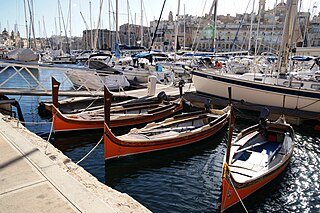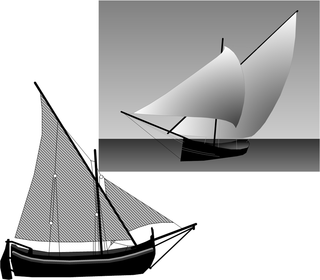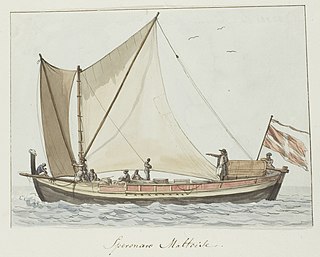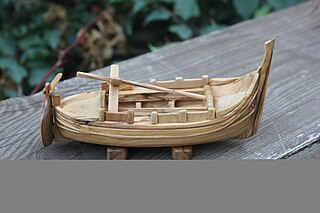
Malta has a long history and was first inhabited in around 5900 BC. The first inhabitants were farmers, and their agricultural methods degraded the soil until the islands became uninhabitable. The islands were repopulated around 3850 BC by a civilization which at its peak built the Megalithic Temples, which today are among the oldest surviving buildings in the world. Their civilization collapsed in around 2350 BC, but the islands were repopulated by Bronze Age warriors soon afterwards.

Valletta is an administrative unit and the capital of Malta. Located on the main island, between Marsamxett Harbour to the west and the Grand Harbour to the east, its population within administrative limits in 2014 was 6,444. According to the data from 2020 by Eurostat, the Functional Urban Area and metropolitan region covered the whole island and has a population of 480,134. Valletta is the southernmost capital of Europe, and at just 0.61 square kilometres (0.24 sq mi), it is the European Union's smallest capital city.

A catboat is a sailboat with a single sail on a single mast set well forward in the bow of a very beamy and (usually) shallow draft hull. Typically they are gaff rigged, though Bermuda rig is also used. Most are fitted with a centreboard, although some have a keel. The hull can be 3.7 to 12.2 metres long with a beam half as wide as the hull length at the waterline. The type is mainly found on that part of the Eastern seaboard of the USA from New Jersey to Massachusetts.

Marsaxlokk is a small, traditional fishing village in the South Eastern Region of Malta. It has a harbour, and is a tourist attraction known for its views, fishermen and history. As of March 2014, the village had a population of 3,534. The village is also known for the Marsaxlokk Market, which is mainly a large fish market which takes place along the seafront on Sundays, and a tourist market during all other days of the week. Inhabited and well-known since antiquity, Marsaxlokk was used as a port by Phoenicians, Carthaginians and also has the remains of a Roman-era harbour. Originally a part of the city of Żejtun, the fishing village became a separate parish in the late nineteenth century.

Salcombe is a popular resort town in the South Hams district of Devon, south west England. The town is close to the mouth of the Kingsbridge Estuary, mostly built on the steep west side of the estuary. It lies within the South Devon Area of Outstanding Natural Beauty (AONB). The town's extensive waterfront and the naturally sheltered harbour formed by the estuary gave rise to its success as a boat and shipbuilding and sailing port and, in modern times, tourism especially in the form of pleasure boats and yachting. The town is also home to a traditional shellfish fishing industry. The town is part of the electoral ward of Salcombe and Malborough, for which the 2011 census recorded a total population of 3,353.
A skiff is any of a variety of essentially unrelated styles of small boats. Traditionally, these are coastal craft or river craft used for leisure, as a utility craft, and for fishing, and have a one-person or small crew. Sailing skiffs have developed into high performance competitive classes. Many of today's skiff classes are based in Australia and New Zealand in the form of 12 ft (3.66 m), 13 ft (3.96 m), 16 ft (4.88 m) and 18 ft (5.49 m) skiffs. The 29er, 49er, SKUD and Musto Skiff are all considered to have developed from the skiff concept, all of which are sailed internationally.

Victory Day is a public holiday celebrated in Malta on 8 September and recalls the end of three historical sieges made on the Maltese archipelago, namely: the Great Siege of Malta by the Ottoman Empire ending in 1565; the Siege of Valletta by the French Blockade ending in 1800; and, the Siege of Malta during the Second World War by the Axis forces ending in 1943.

A luzzu is a traditional fishing boat from the Maltese islands. This type of boat developed in the early 20th century, although it is very similar to much older traditional Maltese boats such as the ferilla. They are usually painted in bright colours, while the bow has a pair of eyes.

The kajjik or kajjikk is a traditional fishing boat from Malta. It developed in the 17th century from caïques which were used elsewhere in the Mediterranean. In the past, kajjikki were equipped with sails and oars, but today the fishing boats are powered by inboard motors. Variants of the boat participate in the rowing regattas held twice every year.

A caïque is a traditional fishing boat usually found among the waters of the Ionian or Aegean Sea, and also a light skiff used on the Bosporus. It is traditionally a small wooden trading vessel, brightly painted and rigged for sail. The caïque is also a typical case of positioning the widest beam far aft, with a long sharp bow.

Precious coral, or red coral, is the common name given to a genus of marine corals, Corallium. The distinguishing characteristic of precious corals is their durable and intensely colored red or pink-orange skeleton, which is used for making jewelry.

The dgħajsa tal-pass is a traditional water taxi from Malta. It is often simply referred to as the dgħajsa, but this word refers to any type of boat in the Maltese language. The boat developed in the 17th century, and was extensively used to ferry passengers in the Grand Harbour and Marsamxett Harbour between the 18th and 20th centuries. Their use declined in the late 20th century, and today few dgħajjes remain in operation ferrying tourists around the harbours. Variants of the boats are still used extensively in rowing regattas held twice a year.
The following outline is provided as an overview of and topical guide to fishing:

Traditionally, many different kinds of boats have been used as fishing boats to catch fish in the sea, or on a lake or river. Even today, many traditional fishing boats are still in use. According to the United Nations Food and Agriculture Organization (FAO), at the end of 2004, the world fishing fleet consisted of about 4 million vessels, of which 2.7 million were undecked (open) boats. While nearly all decked vessels were mechanised, only one-third of the undecked fishing boats were powered, usually with outboard engines. The remaining 1.8 million boats were traditional craft of various types, operated by sail and oars.

A falkusa is a traditional fishing boat used by fishermen from the town of Komiža on the Adriatic island of Vis, Croatia. Falkuša is a subtype of gajeta, a traditional Dalmatian fishing sailboat, and is sometimes called gajeta falkuša. Its design was adapted to the specific needs of Komiža fishermen, who went to long fishing expeditions in the open seas, a unique practice in the Adriatic and Mediterranean.
The Naples Sabot is an 8-foot (2.4 m) sailing dinghy. The Naples Sabot was designed by Roy McCullough and R.A. Violette and the first two were built in Violette's garage during WW II, although official designs were not made available until 1946. The Naples Sabot is based on the Balboa Dinghy and on Charles MacGregor's Sabot as published in Rudder magazine, April 1939. It takes its name from Naples in Long Beach, California, where it was developed.
On 3 October 2013, a boat carrying migrants from Libya to Italy sank off the Italian island of Lampedusa. It was reported that the boat had sailed from Misrata, Libya, but that many of the migrants were originally from Eritrea, Somalia and Ghana. An emergency response involving the Italian Coast Guard resulted in the rescue of 155 survivors. On 12 October it was reported that the confirmed death toll after searching the boat was 359, but that further bodies were still missing; a figure of "more than 360" deaths was later reported.
The Migrant Offshore Aid Station (MOAS) is an international humanitarian non-governmental organization based in Malta that provides aid and emergency medical relief to refugees and migrants.

The speronara was a type of small merchant craft originating from Malta which was used in the Mediterranean from the 16th to the early 20th centuries. The vessels usually had no deck and only one mast, often with a lateen or sprit sail. Some larger vessels had a half deck or up to three masts.

The ferilla or firilla is a traditional fishing boat from Malta. It bears similarities to the dgħajsa, but it is of stronger construction. The ferilla developed in the 17th century and it was common until about 1900. Some examples of this boat type still exist but they are rare.















